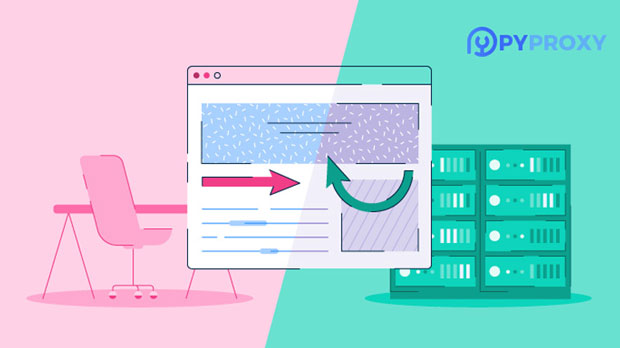In today’s digital age, torrent sites are commonly used for file-sharing purposes, but they are often blocked by institutions like schools and companies. These organizations typically implement strict network restrictions to prevent unauthorized access to certain websites, including torrent platforms. residential proxies, however, are gaining popularity as a method to bypass such restrictions. But can residential proxies truly overcome these limitations, and are they a viable solution for users looking to access torrent sites in restricted environments? This article will explore the effectiveness, benefits, and potential challenges of using residential proxies to access torrent sites from institutions that impose internet restrictions. Understanding Residential Proxies and Their MechanismTo assess whether residential proxies can bypass restrictions, it is crucial to first understand what residential proxies are and how they work. Unlike traditional data center proxies, residential proxies are real IP addresses provided by Internet Service Providers (ISPs) to residential homes. These proxies use IP addresses from real devices and internet connections, making them appear as legitimate traffic to websites and services. Residential proxies are less likely to be detected or blocked by websites and network security systems compared to other proxy types.Residential proxies are especially valuable because they provide an anonymous and geographically diverse range of IPs. This allows users to mimic browsing activity from various locations, making it harder for school or company networks to trace the source of the traffic. With these characteristics, residential proxies offer a potential way to bypass network restrictions that are typically set up by institutions.How Do Network Restrictions Work in Schools and Companies?Network restrictions in schools and companies are generally implemented through firewalls, content filters, and DNS blocking systems. These restrictions are put in place to ensure that users remain focused on productive activities and to prevent bandwidth congestion caused by non-essential content. Torrent sites, which can consume a significant amount of bandwidth, are commonly targeted by these measures.In schools, the goal is often to prevent students from accessing illegal content, reduce distractions, and ensure compliance with educational policies. For companies, restrictions are aimed at preventing employees from downloading large files that could negatively affect the network's performance or expose the organization to security risks.Most of these restrictions rely on detecting certain types of traffic patterns, keywords, or IP addresses commonly associated with torrenting activities. For example, when a user tries to access a torrent site, the institution’s firewall might block access to the IP address associated with the site or monitor for specific torrent-related traffic. The ability to change one’s IP address, as is possible with proxies, makes bypassing these restrictions a possibility.The Role of Residential Proxies in Bypassing RestrictionsResidential proxies work by masking a user's true IP address and routing the connection through a residential IP. Because these IPs belong to real users, they are less likely to be flagged or blacklisted by firewalls or content filters. This allows users to effectively avoid the detection methods used by schools and companies to block torrent sites.When using a residential proxy, the target site (in this case, a torrent site) will see the proxy’s IP address instead of the user’s actual address. Since the proxy’s IP is part of a legitimate residential network, the firewall or filter has little reason to block it, assuming it’s not a known bad IP. Additionally, some proxies rotate their IP addresses, making it even harder for institutions to track and block the user’s activity.Challenges and Limitations of Residential ProxiesDespite their effectiveness in bypassing network restrictions, residential proxies are not without limitations. One of the primary challenges is the cost. Residential proxies are generally more expensive than data center proxies because they rely on real IP addresses provided by ISPs. This makes them less affordable for individuals who want to use them on a regular basis.Moreover, while residential proxies can bypass many network restrictions, they are not foolproof. Some institutions implement advanced security systems that can detect and block proxy usage. These systems can look for anomalies in traffic patterns or try to identify proxies by analyzing the source of the IP addresses. As technology advances, there is a constant battle between proxy providers and network security systems to stay one step ahead.Another challenge is the potential legal implications of using residential proxies to bypass institutional restrictions. In some cases, using a proxy to access blocked content could violate terms of service agreements or even local laws, depending on the region. Users should always be aware of the legal and ethical ramifications of using such services, especially in an institutional environment.Practical Use Cases for Residential Proxies in Torrent AccessFor individuals who are determined to access torrent sites despite network restrictions, residential proxies provide a practical solution. In a school or company setting, using a residential proxy allows users to bypass internet filters and access torrent sites without triggering alarms or being detected. This makes them especially useful for people who need to download large files for academic research or work-related tasks but find themselves blocked by institutional networks.Additionally, residential proxies can offer anonymity and privacy, which is beneficial for users who want to keep their internet activity private. Since residential proxies use real IPs, they are more difficult to trace back to the user, reducing the risk of surveillance or data tracking.Conclusion: Are Residential Proxies a Viable Solution?Residential proxies can indeed overcome school or company restrictions on torrent sites, offering a viable solution for users who need access to such sites for legitimate purposes. They offer anonymity, reliability, and the ability to bypass filters without triggering alarms. However, their effectiveness is not guaranteed in all cases, and there are costs, limitations, and legal risks involved.Before using residential proxies, individuals should weigh the benefits against the potential drawbacks. Institutions are constantly updating their security measures, so it’s important to stay informed about new detection methods. While residential proxies provide a useful tool for bypassing restrictions, users should always act within the legal framework of their region and institution.
Jul 03, 2025



































































